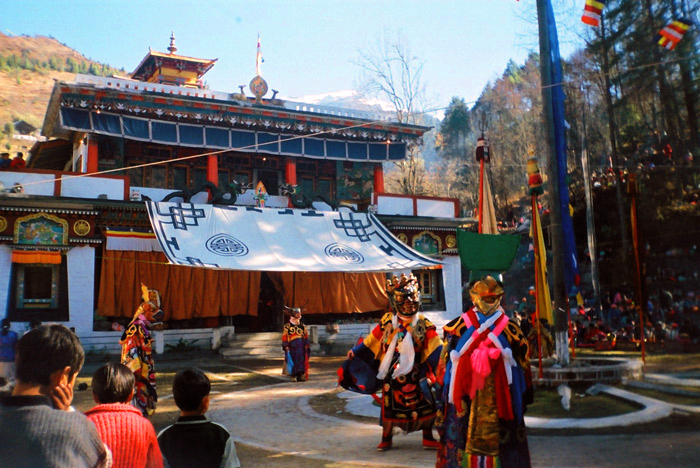Have you heard of the Bhumchu Festival in Gangtok?
Sikkim is the magical state of India. It literally opens a window to the mighty Himalayas. The state is sometimes also referred to as the Switzerland of India. The mountain state which was once an exotic mountain kingdom is largely made up of steep hills and lush green valleys dotted by layers of rhododendron groves. The breath-taking beauty of Sikkim is of course intoxicating but the unique and mystical culture of Sikkim where one sees the confluence of Buddhism and Hinduism is equally enchanting. One of the facets of this beautiful mountain culture that brings alive its colour and vibrancy are the festivals that are celebrate here. One such festival that is celebrated with great pomp and gaiety in Gangtok, the Capital of Sikkim as well as other areas of the North East is the Bhumchu festival. The Bhumchu festival is easily one of the most sacred and important festivals of Sikkim.
The History and Significance of the Bhumchu Festival

The Bhumchu festival involves a sacred pot of water called Bhumchu. This festival’s origin dates back to a period between 755 and 805 CE in Tibet. It is said that Guru Padmasambhava was invited to Tibet and he consecrated and blessed the land with water from his sacred vase. The vase was later hidden in the Tashiding Monastery in Gangtok, Western Sikkim. In the seventeenth century the sacred vase was discovered by a reincarnation of Guru Padmasambhava and the festival of Bhumchu started again.
The Celebrations of the Bhumchu Festival
The mainstay of the Bhumchu festival is the sacred vase known as Bhumchu which is opened and displayed to the public once a year during this two-day festival. The first day of the festival is when the monks or Lamas open the sacred vase of water which had been kept sealed from the previous year’s festival. The future of the region is determined by what they see in the vase. If the vase is full to the brim with water, then it is interpreted that the the region will be subjected to natural disasters and calamities in the new year. If the level of water is observed to be very low, then the interpretation is that the region will be wrought by famine and drought. But if the water level is about half, then the future is said to be calm and prosperous. A small portion of the water is distributed to the people who line up for hours to partake of the water which is considered very holy and is believed to bring good luck to the person who partakes of it. Traditionally only three cups of water were taken out for distribution. One cup for the royal family, one cup for the monks and one cup to be distributed to the masses. On the second day of the festival the sacred vase is again filled with water from a sacred river and sealed and kept aside for opening in the Bhumchu festival the next year.
The Bhumchu festival usually falls in February-March based on the Tibetan calendar. The festival is attended by thousands from across Sikkim, Bhutan, Nepal, and Darjeeling who stand for hours for a glimpse of the sacred vase and a sip of the sacred water.
The power of simple devotion and belief that the Bhumchu festival brings to the fore is the essence of the pure culture of the mountain state of Sikkim and the purity and warm heartedness of the people. Get a feel of the mountain warmth and breathe whiffs of the pure mountain air by coming over to Gangtok. Sterling Gangtok awaits to open your window to the Himalayas.

